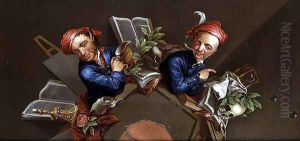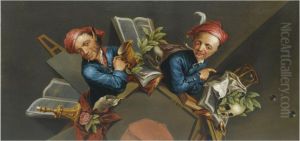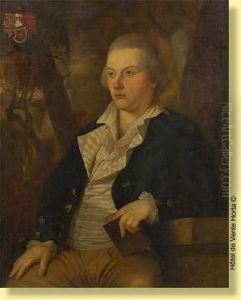Henry Kettle Paintings
Henry Kettle was an English portrait painter active during the 18th century. He was born in 1746, although not much is known about his early life or training. Kettle's work as an artist is remembered for its contribution to the tradition of English portrait painting during a period that saw the rise of notable figures such as Sir Joshua Reynolds and Thomas Gainsborough.
Kettle's career began to flourish in the 1760s. In 1769, he was living in London and exhibited at the Society of Artists. He continued to exhibit his works there until 1776. His style was typical of the period, characterized by a focus on the sitter's face and costume, using a relatively restrained palette and smooth brushwork to capture the likeness and personality of his subjects.
Although Kettle never became as famous as some of his contemporaries, he did achieve a degree of success and was known to have a clientele that included members of the British gentry and aristocracy. This is evidenced by his portraits of individuals such as Lady Charlotte Finch and several members of the Baring family, which were important commissions for any artist of that time.
There is limited information on the specifics of Kettle’s life and the full extent of his artistic output. However, it is understood that he traveled to India in 1786, where he continued his work as a portrait painter. This journey was significant as it opened up new opportunities for Kettle, and he was able to paint portraits of British officials and local dignitaries during his time in India. His Indian sojourn lasted until about 1795, after which he returned to England.
Henry Kettle died in 1803. While he may not have achieved the lasting fame of his contemporaries, his portraits remain as a testament to the style and aesthetic of English portrait painting in the latter half of the 18th century. Kettle's work is held in various collections and occasionally appears at art auctions, providing insight into the work of portrait painters during this period of British art history.


